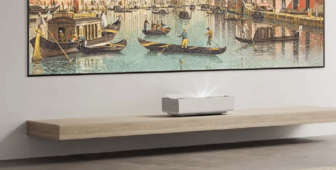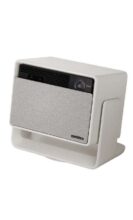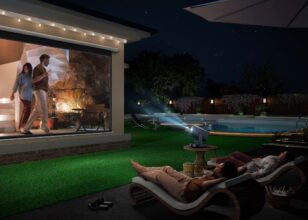BENQ W2710i Projector Review
The BenQ W27 series delivers a premium cinematic experience at a moderate price. The BenQ W2710i significantly enhances HDR capabilities and includes built-in Smart TV for streaming your favorite movies. Tested at 1800 euros.
What is BenQ W2710i?
The predecessor of the tested model, the BenQ W2700, was released in 2019. Alongside its big brother, the W5700, it made a mark in projector history. Back then, XPR shift technology was new, allowing DLP projectors with native Full HD resolution to project the correct number of pixels for Ultra HD. BenQ succeeded in breaking price barriers with color-accurate projectors.
Despite criticism that these devices offered “fake 4K,” they delivered a much higher sharpness than expected. Features like the Cinema Filter, which expanded the color range for HDR, a small optical lens shift, and a calibration report from the factory proved BenQ’s commitment to high cinematic quality with mid-range devices. The success of the series was such that the W2700 is still available on the BenQ website at an even more attractive price. In 2021, the W2700i was launched, adding an integrated Smart TV stick for easy streaming and additional interaction.

With advancements in technology, BenQ has released four updated projectors.
Smart and Smarter, Brilliant and Brighter
The W2710i, features a next-generation Smart TV heart: the Android TV stick QS02. For 100 euros less, the W2710 is available without the streaming addition. Both models use an RGB color wheel for pure cinema colors, which limits the maximum white level. For those who don’t need such precise tones but prefer more brightness, the TK860i and TK860 models are available. These offer less cinematic color neutrality but about 50% better ISO lumen (white brightness) measurements due to transparent segments in the color wheel. The four models are not worlds apart, nor do they represent massive innovations compared to their predecessors, but the small improvements show positive effects in modern film use.
The W2710i looks very similar to its predecessor, though it now includes an additional HDMI port, indicating updated input electronics and image processing hardware. The bandwidth is limited to 18 Gbps, but the “small” side effect is that multi-channel data from movies streamed via the Smart TV stick can finally be passed to an AV system through the audio return channel.

On paper, the optical properties remain the same. The manually adjustable lenses offer a projection ratio of 1.13 to 1.47 and allow for a vertical lens shift of 10%. The classic lamp is expected to last 4000 hours at full power.
We found the Smart ECO mode, which extends the lamp life to 15,000 hours, effective. It adjusts the lamp power to the average brightness of a scene, optimizes black levels, saves power, and reduces fan noise. This does not work without capping highlights in dark scenes or manipulating the gamma distribution (mid-brightness). However, this is where the new video processor excels, improving local contrast and trying to preserve detail even in highly dynamic content (HDR).
The limited dynamic range of projectors for HDR is well known, but older models (like the W2700) couldn’t adapt content intelligently to their hardware capabilities. The W2710i analyzes the required brilliance from video pixels and metadata, adjusting the display to prevent loss of important details (clipping, black crush). While not perfectly neutral for studio use, it is visually more convincing than strict adherence to levels.
The processor supports HDR10+, which adjusts HDR images to low-contrast environments using metadata, though the number of sources is limited. The comparable DolbyVision technology is not available in the BenQ.
Watching standard HDTV without HDR remains at the high level of its predecessor, with advantages like improved active motion compensation. Notably, BenQ supports a Filmmaker mode, ensuring the best possible implementation of colors and 24p motion playback, a feature requiring UHD Alliance permission.
Our test unit came with a calibration report and options for ISFccc adjustment. We found the use of the DCI color filter for “Wide Color Gamut” somewhat unnecessary for HD color space BT.709, as it removes yellow from the lamp spectrum, expanding the red and green color potential significantly. Activating this mode reduces white power by almost half, improving DCI coverage from 92% to 96%. However, the new BenQ achieves 92% DCI color with full brilliance (1200 lumens), while the W2700 managed 80%. This made HDR significantly more enjoyable compared to its predecessor.
Gaming is an important topic today. The W2700 had over 60 ms latency, a deal-breaker for e-sports. The W2710i, with extensive signal processing and motion smoothing, takes 143 ms, but in “Fast Mode” with 120 fps Full HD games, it goes below 20 ms. DLP devices are inherently slower than TVs or monitors because they need to store a full image to sequentially handle colors, taking 16 ms at 60 Hz. Variable refresh rates are generally not possible with DLP (with color wheel), but BenQ has adapted the Auto Low Latency Mode (ALLM) of HDMI 2.1.

We were surprised that our contrast and 4K sharpness measurements compared to the predecessor were not significantly improved. The dynamic adjustment of black levels works more subtly and better now, but the native values haven’t improved much. The 4K pixel sharpness appeared lower, with slightly stronger color shifts at the image edges. These variances could be attributed to testing an exclusive pre-production model earlier and now possibly having a unit that underwent several test cycles.
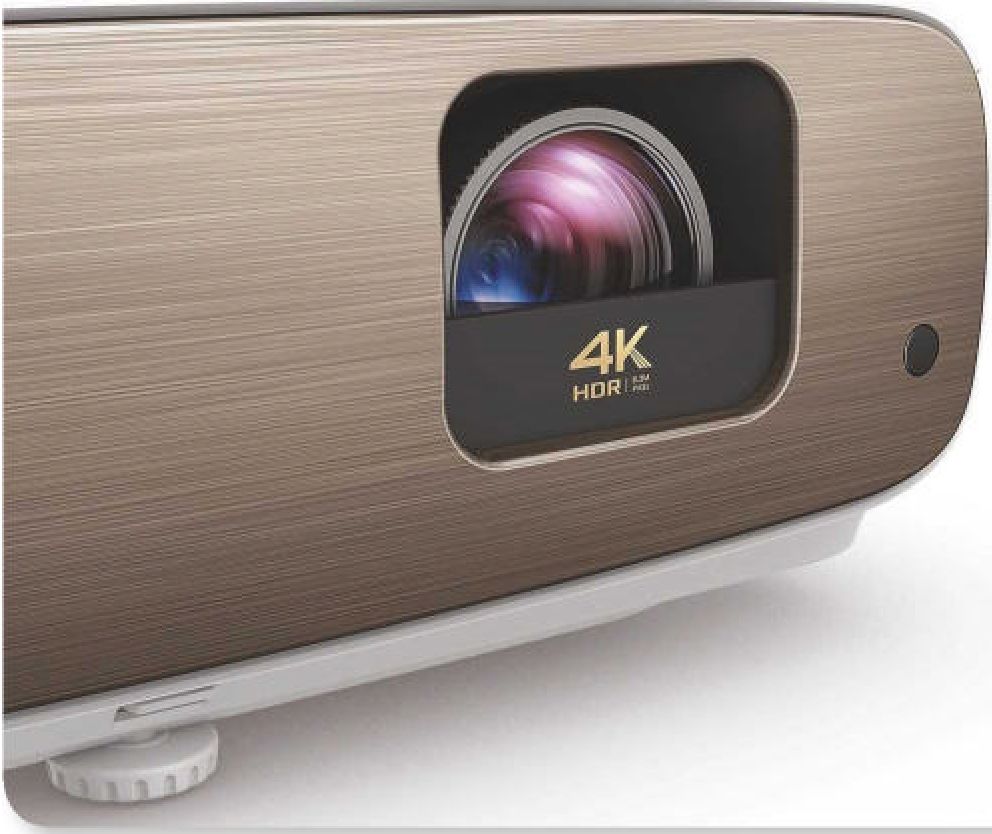
Regarding the smart TV implementation, the new stick runs more important streaming apps more stably. Overall, the solution is well-tuned, with minor issues like different call-up methods for setup and smart TV menus or the projector not turning on with the smart remote. However, the integrated speakers provide surprisingly powerful and harmonious sound.
Key Features
Optimal Settings
- Picture Mode: Cinema
- Light Source: Smart Eco
- Contrast: 49
- Brightness: 50
- Sharpness: 0
- Color: 50
- Gamma: 2.4
- Color Temperature: Normal
Placement
The 1.3x zoom allows for a projection factor of 1.11 to 1.44. The projector prefers the top or bottom edge of the screen and offers 10% vertical shift.
Gaming
With 19 ms latency in “Fast Mode,” gaming works wonderfully. 120 fps is possible, with 240 fps theoretically specified. VRR is not available for DLP devices with a color wheel.
Streaming Included
The Android stick finds its place within the projector housing. The included remote transmits voice commands.
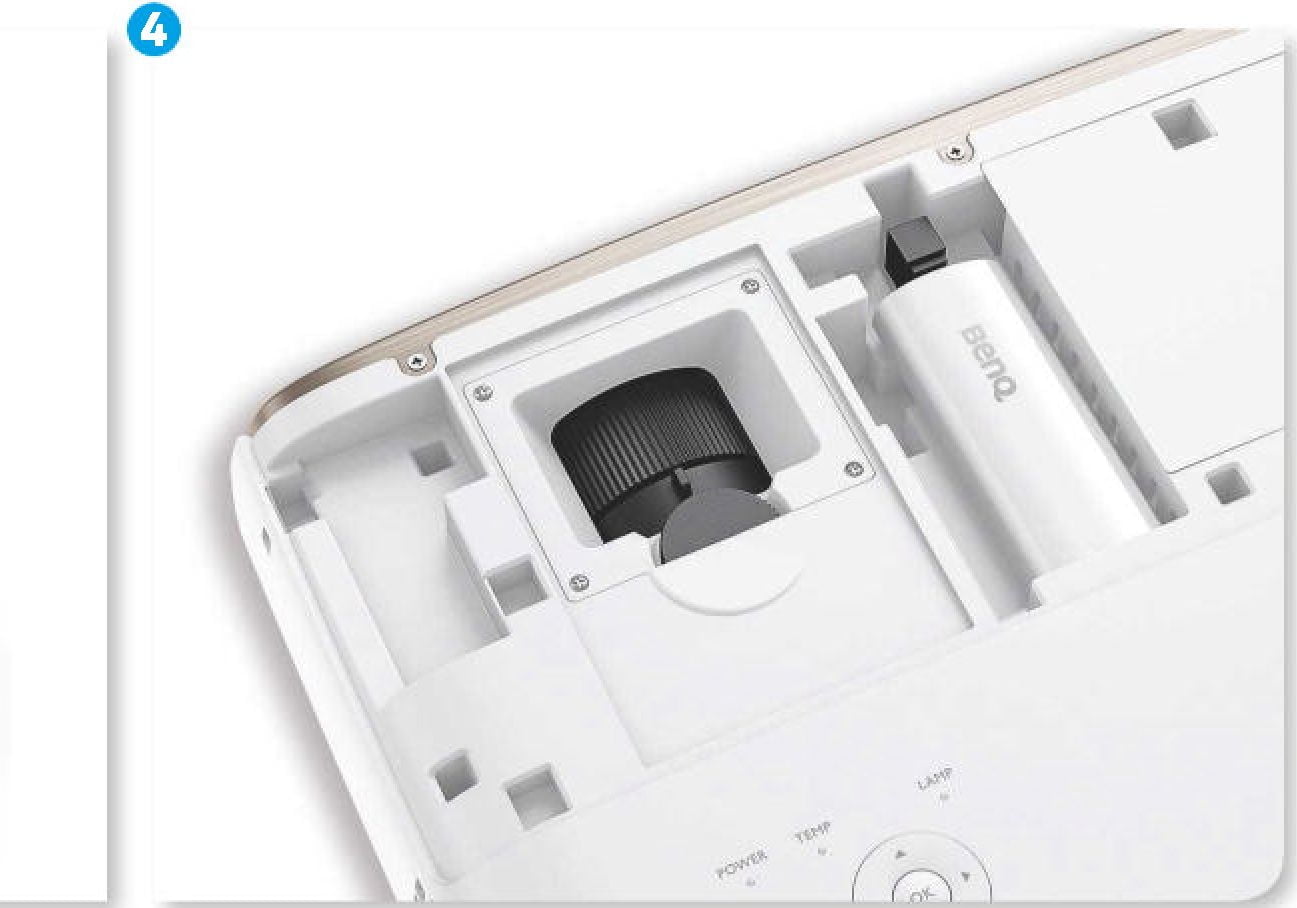
The included Google TV stick QS02 is ideal for streaming and smart TV applications. Using Smart TV over Wi-Fi 6, the BenQ projector becomes an all-in-one entertainer. The tested version with the “i” comes with a TV stick based on Android 11, with all necessary certifications including Netflix. This allows you to start watching TV shows with Magenta TV if you have the right DSL connection.
The projector supports major streaming services including Prime, Apple TV, and Disney+. The HDMI device, identified as a Quadcore Cortex-A35 with 2 GHz, accesses 2 GB RAM and leaves about 9 GB ROM. The extra remote has a microphone for Google Assistant, and features like Chromecast and Airplay are included. The hardware also supports HDR and 3D sound.
Lab Measurements
- Ultra HD HDR, BT.2100, 12 Bit: Even without the cinema filter, the yellow dip extends the DCI color space to 92% at 1200 lumens. HDR colorfulness becomes truly enjoyable.
- HDTV Full HD, BT.709, 8 Bit: In living room mode, the W2710i achieves a clean 1200 lumens. Thanks to the RGB color wheel, the light strengths of primary colors are accurate.
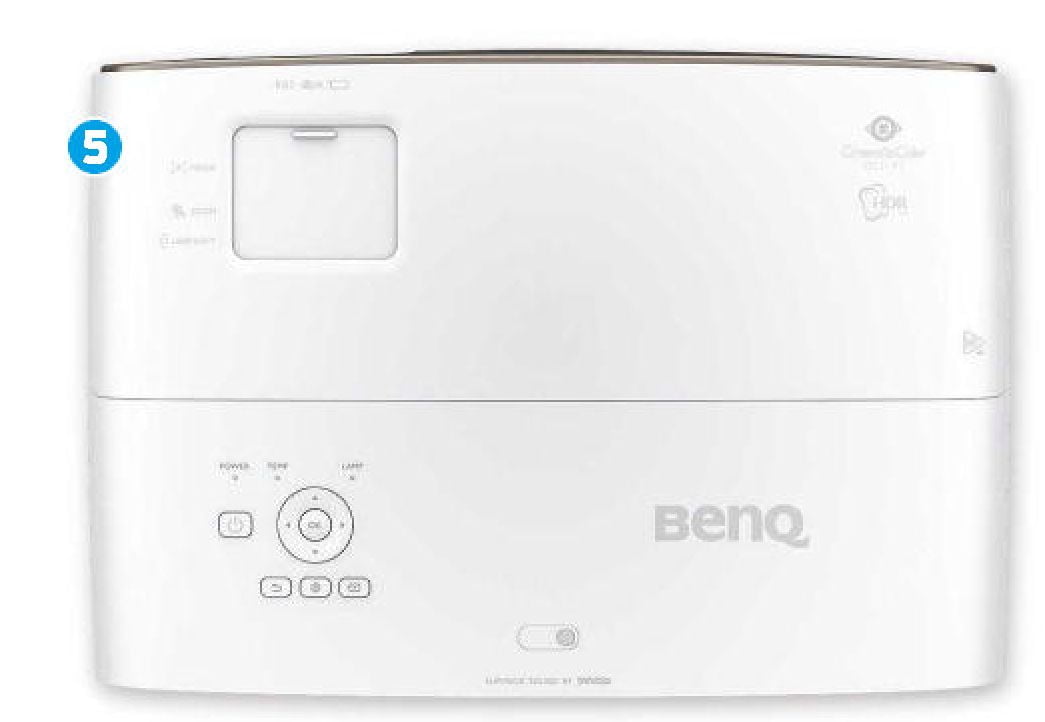
Verdict
The BenQ W2710i offers serious cinematic ambitions for under 2000 euros. With the smart TV addition and improved gaming speed, it presents a well-rounded package.
When you purchase through links on our site, I may earn an affiliate commission. Here’s how it works.
⭐ BenQ W2710i 4K DLP Projector Review
Phil summarises his review of the BenQ W2710i 4K DLP Projector. *from the AVForums Podcast 22-May-2023* ⭐ Read the full ...






